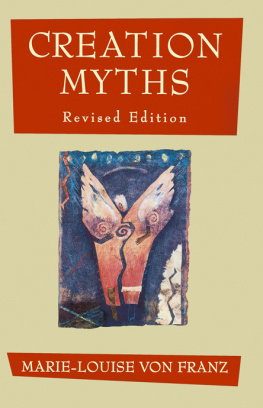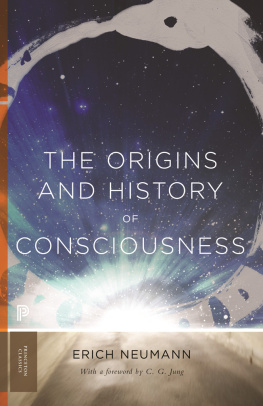Sign up to receive news and special offers from Shambhala Publications.

Or visit us online to sign up at shambhala.com/eshambhala.

A C. G. JUNG FOUNDATION BOOK
The C. G. Jung Foundation for Analytical Psychology is dedicated to helping men and women to grow in conscious awareness of the psychological realities in themselves and society, find healing and meaning in their lives and greater depth in their relationships, and to live in response to their discovered sense of purpose. It welcomes the public to attend its lectures, seminars, films, symposia, and workshops and offers a wide selection of books for sale through its bookstore. The Foundation also publishes Quadrant, a semiannual journal, and books on Analytical Psychology and related subjects. For information about Foundation programs or membership, please write to the C. G. Jung Foundation, 28 East 39th Street, New York, NY 10016.

SHAMBHALA PUBLICATIONS, INC.
4720 Walnut Street
Boulder, Colorado 80301
www.shambhala.com
1972, 1995 by Marie-Louise von Franz
All rights reserved. No part of this book may be reproduced in any form or by any means, electronic or mechanical, including photocopying, recording, or by any information storage and retrieval system, without permission in writing from the publisher.
LIBRARY OF CONGRESS CATALOGING-IN-PUBLICATION DATA
Franz, Marie-Louise von, 1915
Creation myths / Marie-Louise von Franz.Rev. ed.
p. cm.
Rev. ed. of. Patterns of creativity mirrored in creation myths.
Includes index.
eISBN 9780834840805
ISBN 9781570626067
I. Franz, Marie-Louise von, 1915- Patterns of creativity mirrored in creation myths. II. Title.
BL226.F73 1995 94-45173
291.24dc20 CIP
BVG 01
The text in this volume derives from lectures presented at the C. G. Jung Institute, winter semester 1961-62, as transcribed by Una Thomas. Andrea Dykes prepared an index, which was revised for this edition by Austin Delaney.
For helping in the revision of this edition, I want to thank Dr. Vivenne Mackrell for her great support and Mrs. Allison Kappes, who did the comparison with the German edition and the typing. I also want to thank Kendra Crossen of Shambhala Publications for her patient cooperation.
My thanks also go to Princeton University Press for quotations from the Collected Works of C. G. Jung (Bollingen Series XX), translated by R. F. C. Hull and edited by H. Read, M. Fordham, G. Adler, and William McGuire, and for quotations from Aurora Consurgens; A Document Attributed to Thomas Aquinas on the Problem of Opposites in Alchemy by Marie-Louise von Franz, translated by R. F. C. Hull and A. S. B. Glover; to Pantheon Books of New York for quotations from Mircea Eliades The Myth of the Eternal Return (Bollingen Series XLVI), 1954; to the Museum of Navajo Ceremonial Art of Santa Fe, New Mexico, for quotations from Navajo Creation Myth by Hasteen Khah as recorded by Mary C. Wheelwright; to John Murray of London for quotations from Sir Arthur Grimbles A Pattern of Islands, 1952; to H. Schuman of New York for quotations from Post Wheelers The Sacred Scriptures of the Japanese, 1952; and to Doubleday for quotations from Isobel Hutchinsons translation of Festens Gave (The Eagles Gift) by Knud Rasmussen, 1932.

In this book I shall try to interpret motifs that occur frequently in creation myths. Creation myths are of a different class from other mythshero myths or fairy tales, for instancefor when they are told there is always a certain solemnity that gives them a central importance; they convey a mood which implies that what is said will concern the basic patterns of existence, something more than is contained in other myths. Therefore, one may say that as far as the feeling and emotional mood which accompany them are concerned, creation myths are the deepest and most important of all myths. In many primitive religions the telling of the creation myth forms an essential teaching in the ritual of initiation. They are told to the young initiates as the most important part of the tribal tradition. In many other ways also, as we shall see later, they refer to the most basic problems of human life, for they are concerned with the ultimate meaning, not only of our existence, but of the existence of the whole cosmos.
Because the origin of nature and of human existence is a complete mystery to us, the unconscious has produced many models of this event. The same thing happens wherever the human mind touches the borders of the unknown. If, for example, you look at maps of antiquity, Greece is shown more or less in the center of the map, but on the borderline things become a bit distorted and unknown; the upper part of Yugoslavia tends toward the upper part of Italy, and then at the end of a known area there is simply a drawing of the uroboros, the snake which eats its own tail, which on old maps also represents the ocean. As decoration, at the corners of the maps, there are pictures of animals or monsters, or of the four winds. In the Middle Ages the area of the known world was always shown in the center surrounded by all-embracing symbols and sometimes even demonic figures: the four winds blowing toward the center, heads with blowing mouths, or something similar. These maps demonstrate ad oculos that wherever known reality stops, where we touch the unknown, there we project an archetypal image.
The same applies in the case of medieval astronomical charts. In the Middle Ages they drew all the constellations they knew, and outside them the cosmos was surrounded by the Zodiac snake, the snake on which were all the signs of the Zodiac; beyond that lay the unknown. There again the snake which bites its own tail, the uroboros motif, comes up where man reaches the end of his conscious knowledge. In late antiquity, the beginnings of chemistry show that people also had certain knowledge of the elements and some technical knowledge, but when it came to the end of known facts, they again projected this archetypal image, the symbol of the uroboros, to characterize the mystery of unknown matter. In alchemy it was the symbol of the prima materia, of the original matter of the world.
Most of the questions as to the origin and substance of our cosmos have not been resolved for us; in spite of the increase of technical instruments, unknown factors still remain. There are archetypal models and projections of modern science which I shall discuss later, but we are still confronted with completely puzzling facts and with contradictory theories. Other civilizations have not been less naive than we, for they too fell into this hole of the unknown, and when confronted with a mystery, they projected mythological symbols out of which, among other things, the creation myths arose.
In order to explain what projection means, I would like to call your attention to Jungs definition of projection. One sees again and again that projection has not been really understood, but always gives rise to all sorts of misinterpretation. Jung says in his definitions at the end of Psychological Types:
Projection means the expulsion of a subjective content into an object; it is the opposite of
Next page


















